LUPATOid CODIFICATION:
HOW IT WORKS
A universal code that unambiguously defines all the possibilities of rough finishes on stone through three parameters:
sign, layout and density.
Download the swatch book in PDF format or request your printed copy
HOW TO READ
THE CODE
The Lupatoid codification is based on three easily comprehensible parameters: type of sign, layout and density. Every finish results in an alphanumeric code (for example ID.PRA3) which contains the indications of the three values.
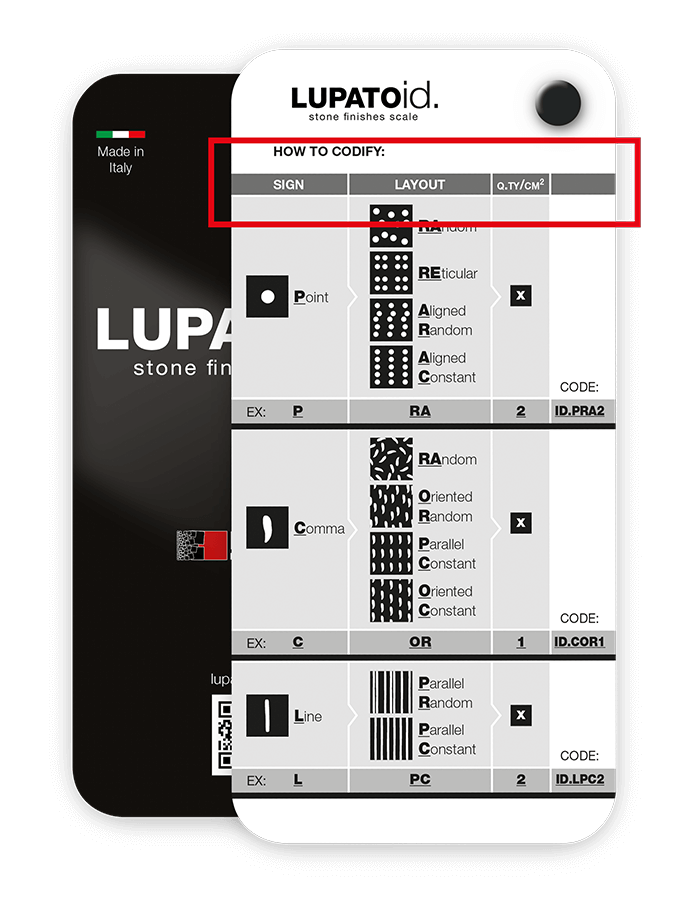
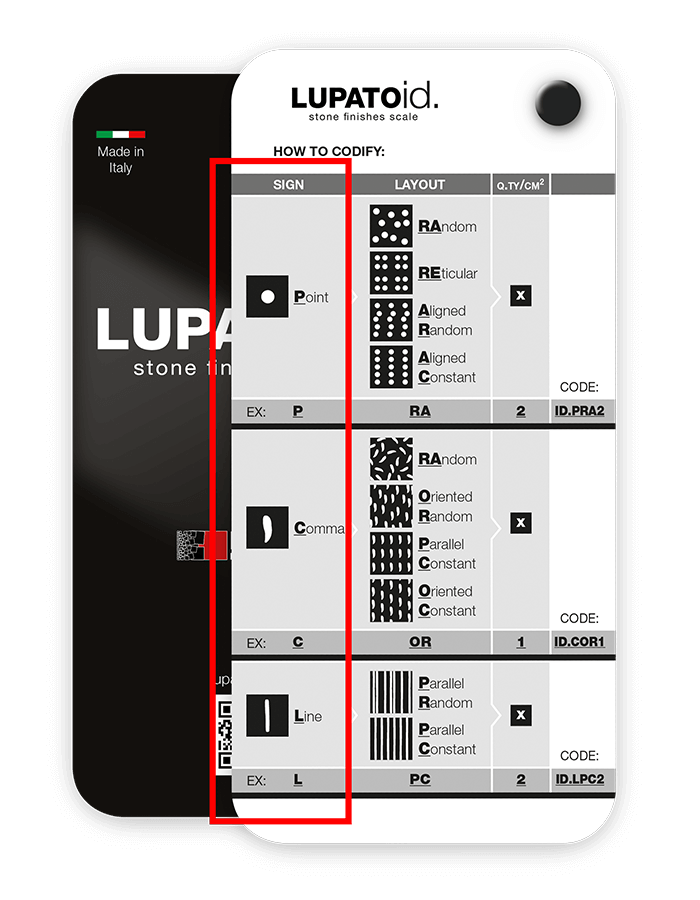
1. SIGN
The type of sign defines the first letter of the code after the identifier ID., and is associated for comprehensibility with traditional orthographic signs: points, commas and lines.
2. LAYOUT
The layout indicates the arrangement of the signs and defines the second two letters of the code.
Depending on the finish it can have different values: RAndom, REticular, Aligned Costant and so on.
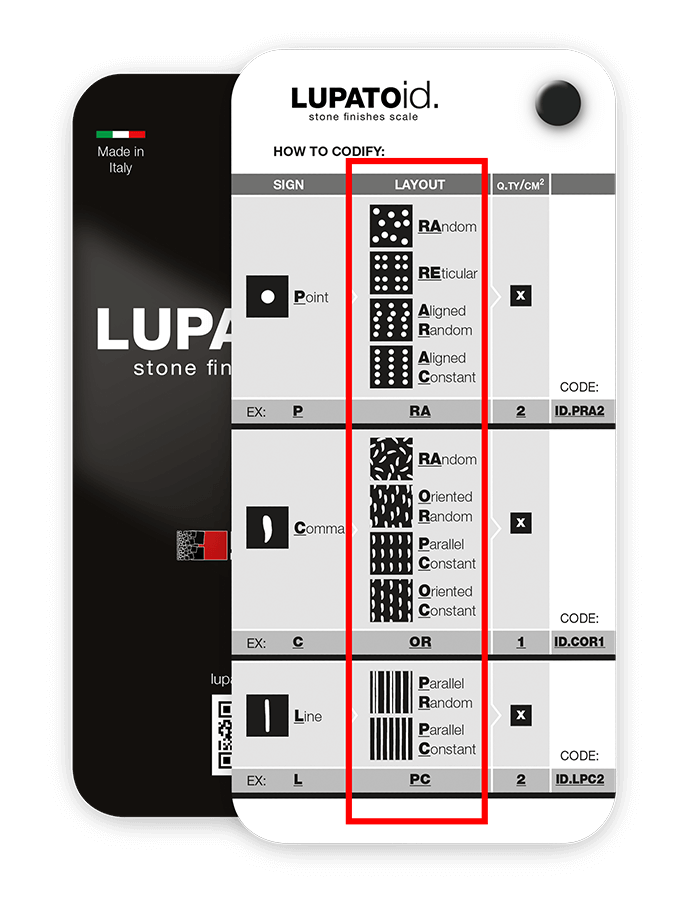
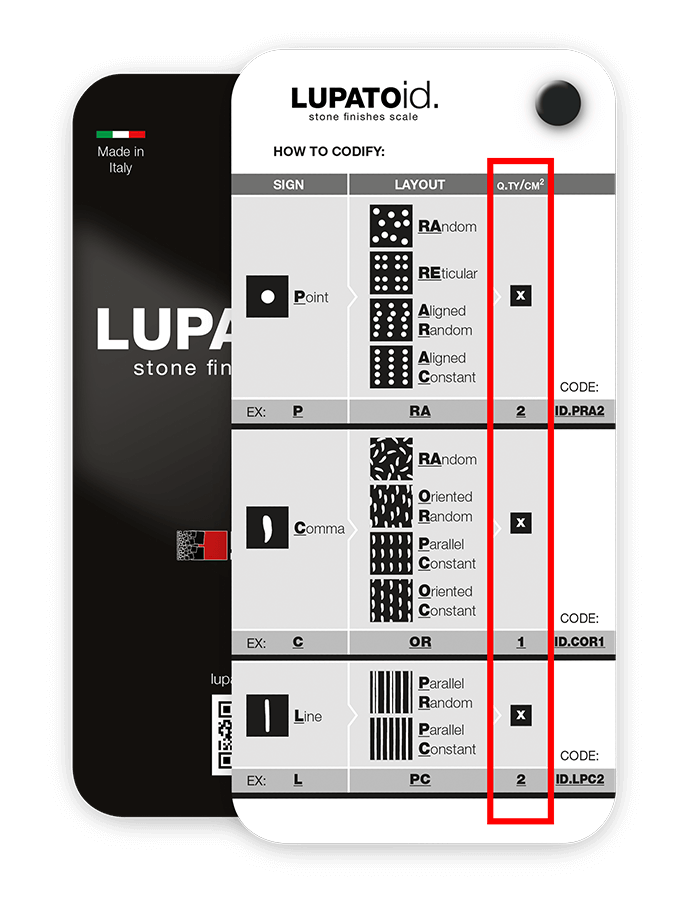
3. DENSITY
The density value defines the last number of the code and indicates the average quantity of signs on the surface of a square centimeter.
THE CODES
The combination of the letters referred to the type of sign and layout, followed by the number which indicates the density, forms the Lupatoid code of the finish.
In the Lupatoid swatch book there are over 30 examples of coded finishes, which represent the most common rough finishes. The swatch book can also be used for comparison to identify many other finishes.
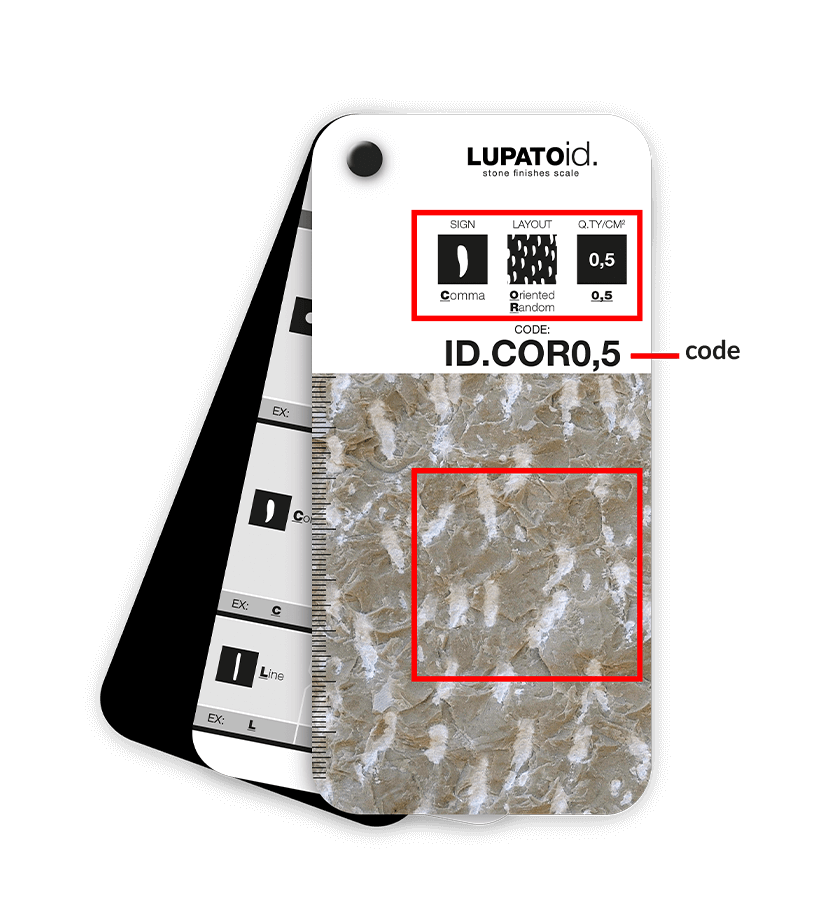
HOW TO READ
THE CODE
The Lupatoid codification is based on three easily comprehensible parameters: type of sign, layout and density. Every finish results in an alphanumeric code (for example ID.PRA3) which contains the indications of the three values.

1. SIGN
The type of sign defines the first letter of the code after the identifier ID., and is associated for comprehensibility with traditional orthographic signs: points, commas and lines.

2. LAYOUT
The layout indicates the arrangement of the signs and defines the second two letters of the code.
Depending on the finish it can have different values: RAndom, REticular, Aligned Costant and so on.

3. DENSITY
The density value defines the last number of the code and indicates the average quantity of signs on the surface of a square centimeter.

THE CODES
The combination of the letters referred to the type of sign and layout, followed by the number which indicates the density, forms the Lupatoid code of the finish.
In the Lupatoid swatch book there are over 30 examples of coded finishes, which represent the most common rough finishes. The swatch book can also be used for comparison to identify many other finishes.
